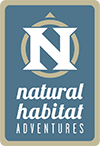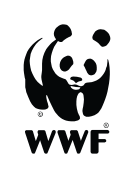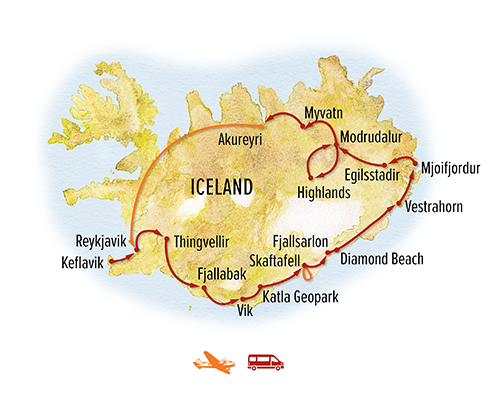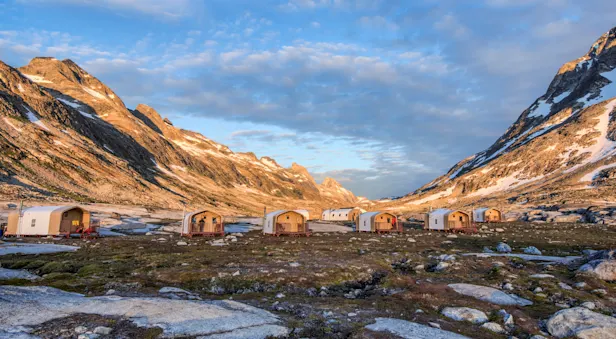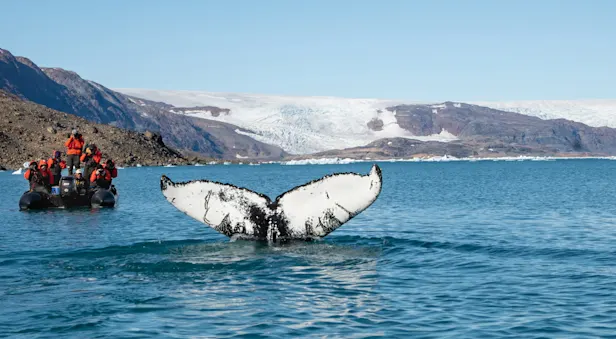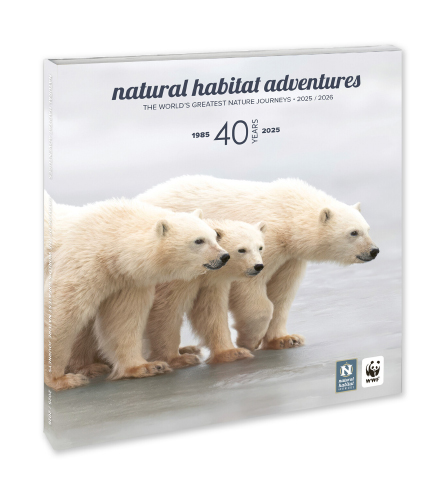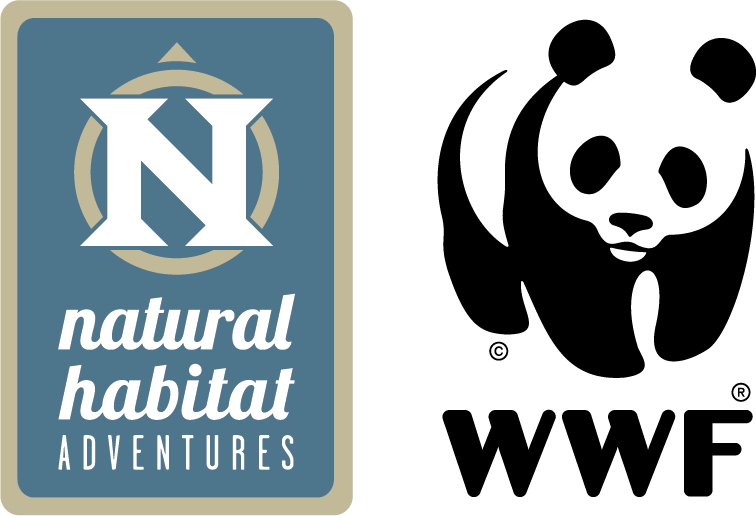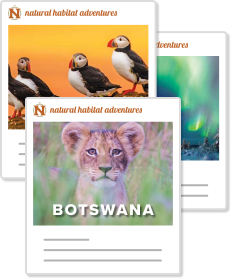2025 Itinerary
Arrive at Keflavik International Airport where you are met on arrival and transferred to our hotel in Reykjavik, about a 45-minute drive. This evening, join our Expedition Leader for a welcome dinner at a local restaurant, with an orientation to all the photography adventures that lie ahead in this geological wonderland.
Day 2: Thingvellir National Park / Strokkur Geyser / Waterfalls
Our adventure begins in Thingvellir National Park for an on-the-ground perspective on Iceland’s geological origins. Here on the Mid-Atlantic Ridge, the epicenter of where the Icelandic landscape is forming, we can actually see fissures where Earth’s crust is separating. Thingvellir is also the site of Iceland’s political founding, when Norse settlers formed the world’s first parliament in 930. On this site, 30 ruling chiefs met to discuss law and order on the island and to create a government.
Later today, after most day trippers have left, we'll photograph waterfalls in the evening light. Bruarfoss is one of Iceland’s most beautiful, where dozens of cascading streams from the Bruara River fall in a semi-circular pattern, converging again in the rushing blue river below. After dinner, we visit Strokkur, Iceland’s most active geyser, erupting about every 10 minutes. Then, in the golden-hour light, photograph powerful Gulfoss—"Golden Falls"—one of Iceland's most dramatic waterfalls. It was formed during the last ice age when glacial runoff carved out a deep canyon, creating a series of drops over which the Hvita River plunges. Late this evening, we arrive at our hotel on the South Coast to spend the next two nights.
Day 3: Exploring the Highlands—Fjallabak Private Super Jeep Tour
Today holds a full-day Super Jeep exploration of Iceland’s remote highlands. Moving inland from the lush coast, we witness a rapid change in vegetation as we enter the mountains. Here in the southern sector of Fjallabak Nature Reserve, we find a stunning landscape to entrance photographers. Rugged peaks in an array of shapes, forms and colors flank the 4x4 track we follow, the rock palette tinted by rhyolite and obsidian. A vivid blanket of green alpine moss and lichen adds a bright accent, while black sand expanses lend contrast, filling the gaps between jagged ridges, volcanic summits and dramatic canyons and valleys. At times, the setting is evocative of a moonscape, stark and breathtaking. The region is laced with braided riverbeds, which we cross multiple times. A view of Myrdalsjokull glacier—one of Iceland’s largest, which conceals Katla, one of its most active volcanoes—is a highlight. While Fjallabak is a popular hiking destination, we’re still mostly alone here, rarely encountering other people or vehicles.
Day 4: Waterfall Photography / Katla Geopark / Diamond Beach
The South Coast is known for some of Iceland’s most spectacular waterfalls, and this morning offers a chance to photograph three of the largest and most famous: Seljalandsfoss, Skogafoss, and Kvernufoss. We’ll spend the next three nights in the area around Vik, known for its volcanic black sand beaches and dramatic rock formations. Other subjects include the Dyrholaey Peninsula, with its picturesque lighthouse on the most southerly point of mainland Iceland, and Reynisdrangar Rocks. Legend holds that this trio of columnar basalt sea stacks was formed after two trolls were out fishing in a three-masted ship. When the trolls did not return to their cave before sunrise, they and their vessel turned into needles of stone, since trolls cannot tolerate daylight.
Continuing our encounters with the fascinating geological features on Iceland’s south coast, we investigate the dynamic relationship between fire and ice, examining the largest glacial outwash plane in the world. Katla UNESCO Global Geopark contains roughly 9% of Iceland’s total landmass, encompassing massive glaciers and active volcanoes that have shaped the land for millennia, including the powerful eruptions of Eyjafjallajokull in 2010 and Grimsvotn in 2011. The geopark also holds glacial rivers, lakes, meadows of purple lupine, black sand beaches, vast lava fields, and caverns, including Hjorleifshofdi Cave, also known as the “Yoda Cave” after it was featured in the Star Wars film Rogue One. Lomagnupur Mountain is an impressive subject, with steep cliffs and a flat top that we may find reflected in nearby ponds.
After dinner, head to Diamond Beach, where icebergs wash up on shore to create a sparkling contrast with the volcanic black sand. The late evening light offers excellent photography conditions, with the sun’s sinking rays gleaming on the scattered icebergs. Seals also frequent the beach, and orcas are sometimes seen offshore.
Day 5: Skaftafell Flightseeing / Svinasfell Glacier
Get an aerial perspective on some of Iceland's most dramatic scenery from a private fixed-wing plane flight over the Skaftafell region of Vatnajokull National Park. Known for its rugged landscapes, mountains and glaciers, Skaftafell contains about half of the Vatnajokull Glacier, Europe’s largest ice cap. No roads penetrate the park’s wild recesses, but our one-hour low-altitude flight reveals an artistic landscape, with intriguing patterns, contrasts and colors for creative imagery. Photograph the plain of Skeidararsandur, an expanse of black sand and ash sliced by braided glacial rivers that resemble an intricate network of veins. Capture striking shots of the jagged expanse of Skeidararjokull Glacier, draining off Vatnajokull, Iceland’s largest ice cap.
We also spend time on the ground, walking among the scenic outflow of Svinasfell Glacier, a large outlet glacier that flows down from the Vatnajokull ice field. Its surface is especially jagged, with many sharp ridges that lend drama to images, as well as its varied coloration—deep blue ice, white snow and veins of black ash left over from volcanic eruptions in centuries past. The ash patterns create remarkable abstract designs in the ice, a phenomenon not readily found anywhere else in the world.
Day 6: Fjallsarlon Glacier Lagoon—Private Zodiac Cruise / Mulagljufur Canyon
On a private Zodiac cruise at Fjallsarlon Glacier Lagoon, we have extended time to photograph the glittering icebergs floating atop the meltwater lakes. The lagoons are fed by the massive Vatnajokull glacier, the largest in Europe. The ice cap covers more than 3,100 square miles—8% of Iceland—and the glacial tongues that flow from it calve the huge chunks of blue ice that drift on the surface of the lagoons. With our Expedition Leader, go ashore for short hikes in the area that overlook the floating ice sculptures from shore.
This afternoon, we hike into the otherworldly Mulagljufur Canyon, one of Iceland's most scenic yet still relatively little-known destinations.
Evocative of the Grand Canyon's layered walls yet covered entirely in green vegetation, it's more reminiscent of Kauai, with tall waterfalls plummeting down its verdant sides. As we ascend the side of the mountain, we gain views into the canyon's depths, and the broad expanse of the south coast. On our last night in the area, we’ll venture out in the evening for more coastal photography in the golden light.
Day 7: Coastal Photography—Stokksnes & Vestrahorn / Hofn
Today marks a transition in our itinerary, moving from Iceland’s youngest and most dynamic landscapes along the active rift zone toward older regions along the east coast. Along our eastward route, we seek out Icelandic horses, intricate riverbeds and more rugged landscapes to photograph. The Stokksnes Peninsula is full of enticing subjects, from beaches of jet-black sand to 10-foot-high sand dunes covered in bright green beach grass, and the ragged profile of Vestrahorn, one of Iceland’s most stark and stunning mountains. The sheer-sided massif is comprised mostly of rare gabbro rock, a plutonic magma nearly 11 million years old. Near Hofn, where we spend the night, we’ll shoot striking coastal rock formations and bucolic scenes of sheep grazing in lush pastures, adjusting to changing light and weather conditions to take advantage of the best photography opportunities.
Day 8: Vestrahorn & Eystrahorn / East Fjords / Egilsstadir
Begin the day with another chance to shoot the iconic profile of Vestrahorn in the morning light. We also photograph the jagged range of Eystrahorn, a lesser-known set of peaks surveying a wild black sand beach on the southeast corner of Iceland. Then follow the coast into the little-visited East Fjords, which has some of the oldest rock in Iceland, with layer upon layer of basalt from ancient eruptions slowly carved away by 2.5 million years of successive ice ages. The expansive coastal plain transitions to classic U-shaped glacial valleys flanked by weathered basalt mountains. The ocean is always close as the road winds along the fjord-riven coast, unveiling rocky coves and picturesque fishing villages. The tiny town of Djupivogur hugs the mouth of narrow Berufjordur Fjord, where we may see whales, seals and dolphins.
After dinner in Breiddalsvik, capitalize on the evening light as we meander our way through the peaceful, less-traveled Breiddalur Valley, with stops along the way to photograph burbling creeks, lakes and striking mountains. A short walk leads to Flogufoss, a hidden waterfall deep in the valley. Then, we drive across a mountain pass and drop into the glacial valley of Lagarfljot, continuing to Egilstaddir, East Iceland’s largest town, where we check in to our hotel for two nights.
Day 9: Mjoifjordur / Borgarfjordur Eystri—Puffin Photography / Private Marine Safari
Our focus for the first half of the day is one of the most photogenic of the East Fjords, the slender finger of Mjoifjordur, which means "narrow fjord." Carved out by successive ice ages and protected from the elements along the outer coast, the water is often calm as glass, making for beautiful reflection photography. We occasionally spot whales in the fjord as well. This is one of the most remote destinations in Iceland, accessed by a road that is open for only about four months a year, when it is snow-free. The steep, winding gravel road that descends to the sea extends to the end of the 11-mile fjord. Mjoifjordur’s setting at the head of the fjord is stunning, surrounded by an amphitheater of waterfalls. A highlight is Klifbrekkufossar, a seven-step cascade that terraces down through a rugged chasm carpeted with green vegetation. A trail hugs the side of the waterfall, allowing access to varied angles and closer views.
Continue to Borgarfjordur Eystri, a fjord that is reputedly home to one of numerous “elfin communities” that thrive in Icelandic mythology. The fjord takes its name from the Icelandic elf-queen, Alfaborg, who is said to live nearby. Here we find one of Iceland’s largest Atlantic puffin colonies, and we spend several hours among them this afternoon on a puffin photography intensive. A boardwalk weaving through the colony allows easy access, and since the puffins are accustomed to human presence, we are able to get exceptionally close shots. Then, gain another angle on puffins as we head to sea on a private two-hour RIB safari, exploring the coastline from a rigid inflatable boat. Capture shots of puffins in their cliffside dens, plus many other seabirds, seals, dolphins and possibly whales. Return to Egilsstadir for a second night.
Day 10: Lagarflojt Valley / Modrudalur
Travel inland today from Egilsstadir for an in-depth exploration of scenic Lagarflojt Valley. We stop for photos of Lagarflojt Lake, where local lore holds that a sea monster inhabits its waters. We are surrounded by an evocative wild, rural landscape, offering opportunities to photograph Icelandic horses, rarely seen waterfalls, and impressive canyons. Climbing into the highlands, we follow Iceland's original Highway 1 over two remote passes and through a rare tract of Icelandic forest to reach Modrudalur. This is one of the oldest farms in Iceland, with evidence of its presence since the original settlement by the Vikings. The site was an important crossroads where two historic cross-country trails intersected, and its location is referenced in the famous Sagas that date to the 10th and 11th centuries. Modrudalur is also the highest inhabited place in Iceland, at 1,539 feet above sea level. We spend the next two nights here at Fjalladyrd, a hospitable family-run farm.
Day 11: Private Highlands Super Jeep Tour / Modrudalur
Set out in Super Jeeps this morning to explore the hidden wonders of Iceland’s little-visited highlands. These large SUVs have been modified with big tires and extra shock absorption to provide a more comfortable ride over off-road terrain, allowing deeper access into this remote region. On our adventurous journey through the lunar-like landscape, we make multiple stops that may include Villi’s secret waterfall and the 5,501-foot Herdubrid, a peak known as the “Queen of Iceland.” We marvel at Hafrahvammagljufur Canyon, a dramatic gorge more than 650 feet deep, from high grassy slopes overlooking the abrupt chasm. We also visit one of Iceland’s traditional turf houses—historic dwellings constructed from earth, stone and timber. Return to Modrudalur for a second night at Fjalladyrd. The stark landscape is iconic to Iceland’s highlands. Slivers of life grow where water flows, crater rows line the horizon, and old lava flows from the active Askja volcanic system create an extraordinary landscape.
Day 12: Dettifoss & Selfoss / Lake Myvatn / Hverarond / Akureyri / Reykjavik
Photograph mighty Dettifoss, Europe’s largest waterfall by volume and the most powerful in Iceland. This thundering curtain of water, churning spray into the sky, is 330 feet wide and 150 high, fed by the giant Vatnajokull Glacier, which spawns the Jokulsa a Fjollum River. Dettifoss is contained inside a massive canyon carved out by ancient glacial outwash floods, where four times the volume of the Amazon River once tore through this landscape. We frequently see rainbows over the falls, which make for dramatic photos. We also stop at Selfoss, a striking U-shaped wall of rushing cataracts fed by the same river originating in Vatnajokull.
Continue to Lake Myvatn, located in the rift zone of the North American and Eurasian tectonic plates. The lake was formed during a massive eruption 2,300 years ago and is still a site of geothermal activity, with lava flows coming most recently from the 1984 eruption of Krafla volcano. Numerous lava formations are found in and around the shallow lake, and we photograph the pseudocraters of Skutustadir on a short hike. These phenomena are formed when lava flows over wet ground, pushing it down and trapping steam. As pressure mounts, steam explosions create these fascinating "false craters." One of the premier birdwatching areas in the world, Lake Myvatn’s marshes provide habitat for huge numbers of migratory birds in summer. More than 115 species have been seen at the lake, including 15 species of nesting ducks, horned grebe, great northern diver, common loon, red-throated loon, whooper swan, Barrow's goldeneye, and many more seasonal visitors.
Nearby, photograph the striking turquoise lake filling Krafla Viti Crater and explore the Leirnjukur Lava field – colourful rock, moss and lichen, and a striking crater from the 1970’s eruptions in the region. More of Iceland's simmering subterranean energy is on display at Hverarond, hissing with steam vents, bubbling mud pots and pungent sulphur. Driving west, we stop to photograph Godafoss, one of Iceland’s most beautiful waterfalls, which originates deep in the highlands. Shaped like a crescent, it drops 40 feet over a sheer volcanic cliff.
After an hour drive along Eyjafjordur, one of the longest fjords in Iceland, we arrive in Akureyri for a celebratory farewell dinner before our flight to Reykjavik.
Day 13: Keflavik / Depart
A transfer from the hotel to Keflavik International Airport is included to meet departing flights.


